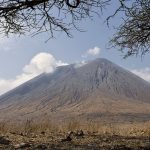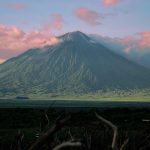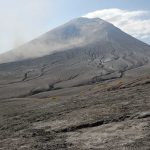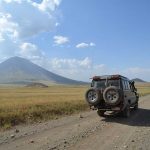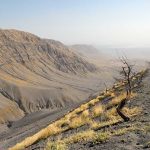Ol Doinyo Lengai, “Mountain of God” in the Maasai language, is an active volcano located in the Gregory Rift, south of Lake Natron within the Arusha Region of Tanzania. Part of the volcanic system of the East African Rift, it uniquely produces natrocarbonatite lava. The 1960 eruption of Ol Doinyo Lengai led to geological investigations that finally confirmed the view that carbonatite rock is derived from magma.
The carbonatite ash spread over the surrounding grasslands leads to a uniquely succulent, enriched pasture. This makes the area a vital stage on the annual wildebeest beast migration, where it becomes the nursery for the birth of several thousand calves.
[smart-grid row_height=”240″ mobile_row_height=”120″ last_row=”justify” title=”false” share=”false”]
[/smart-grid]
This volcano exists at the point at which the African continent is tearing itself apart, and the hellish mantle is rising up to fill the gap. There are actually a few places around the world that have carbonatite lava, although a third of all carbonatite volcanoes exist in the East African Rift.
It’s unclear why this particular combination of elements are so prevalent at Ol Doinyo Lengai, but the leading theory is that a conventional magma became so enriched in these elements that they separated off and could no longer mix properly – like oil and water – and a new magma type was born.
This particular volcano didn’t always erupt weird carbonatite lava either, but for modern humans, it’s actually a good thing that it does. Because this lava type contains plenty of rare earth elements, which are a vital component of modern electronics.
In fact, this volcano is fairly unthreatening, even when it erupts explosively and produces an ash plume. The most recent occurred in 2008, and it didn’t cause too much trouble. Actually, being around 370,000 years old, it’s actually proving to be quite useful for archaeologists.



